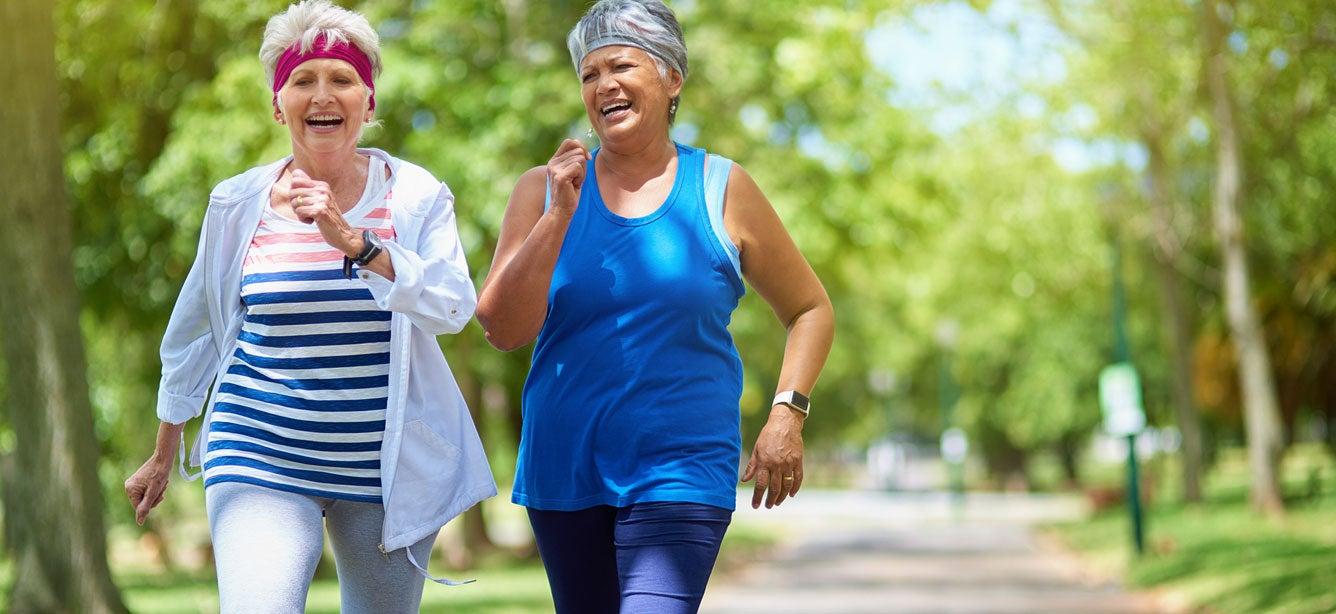Managing Arthritis Symptoms: How to Find a Program That Helps
3 min read

Related Topics
One in four adults in the US are living with arthritis.1 In fact, it’s one of the top three chronic health conditions experienced by those 65 and older.2 Although there are over 100 different types of arthritis, the most common form is osteoarthritis (OA). Symptoms often include joint pain, stiffness, and swelling.
According to the National Public Health Agenda for Osteoarthritis: 2020 Update, there are four evidence-based public health interventions that are considered the first line of prevention and management of OA:3
- Self-management education
- Physical activity
- Weight management
- Injury prevention
Luckily, there are community-based programs available across the country that can help you learn and apply some of these strategies to your everyday activities. In fact, there is a set of programs called “Arthritis Appropriate Evidence-Based Programs (AAEBIs),” meaning that they are not only proven to improve health outcomes for people with various health conditions, but they are also proven to positively impact arthritis symptoms specifically.
All of the current AAEBIs are also considered Evidence-Based Programs by NCOA. They are widely available in community-based settings like senior centers, parks and recreation centers, healthcare settings, etc. The programs are categorized as either Self-Management Education programs or Physical Activity programs, and many of them address common skills such as goal setting, identifying barriers, and tracking progress.
Physical activity programs for people with arthritis
Although it used to be common for people with arthritis to be told to “stay off” or “rest” the affected joints, we now know that just the opposite is true. Movement is good for joints, especially joints impacted by osteoarthritis. Research shows that people with OA can and should participate in physical activity. It is, in fact, one of the most effective strategies to manage common OA symptoms such as pain and stiffness.4
If you have OA, or other forms of arthritis, you should aim for 150 minutes of moderate physical activity per week.5 However, learning how to be active while still protecting your joints can be nerve-wracking for some people with the disease. Taking part in an AAEBI that focuses on safe and effective exercise for people with arthritis can help ease fears, improve confidence, and lead to increased activity levels. Check out this printable list of current AAEBI Physical Activity Programs.
Self-management education programs for managing arthritis
Your ability to manage your own actions related to the management of your condition/s is essential for improved health. Self-management can include everything from your food choices to communicating with your health care providers. Recognizing what needs to be done, making healthy choices, and maintaining positive behaviors will not only help control your symptoms, but will also contribute to your overall quality of life.
Self-management skills often need to be learned, applied, practiced, and revised in an ongoing cycle. The solutions and actions that work for you are not likely to work for someone else, but the skills themselves have been identified and proven to work. These AAEBI Self-Management Education programs can help you gain a deeper understanding of how the disease impacts daily activities, and how gaining control can improve not only your health, but your overall well-being.
How to find arthritis-approved evidence based interventions near you
AAEBIs often taken place in locations you are familiar with and may already visit on a regular basis— senior centers, YMCAs, parks and recreation centers, and similar settings. You may also want to contact your local Area Agency on Aging or the Arthritis Foundation Helpline to find workshops and classes near you.
If you are interested in learning more about OA, please visit the Osteoarthritis Action Alliance’s OACareTools webpage. This site has extensive tools and resources to assist you in your OA journey.
Sources
1. Centers for Disease Control and Prevention. CDC Arthritis Program. Found on the internet at https://www.cdc.gov/arthritis/communications/press.htm
2. NCOA. 2022. The Top 10 Most Common Chronic Conditions in Older Adults. Found on the internet at https://www.ncoa.org/article/the-top-10-most-common-chronic-conditions-in-older-adult
3. Osteoarthritis Action Alliance. The National Public Health Agenda for Osteoarthritis: 2020 Update. https://oaaction.unc.edu/policy/oa-agenda-2020-update/
4. The Arthritis Foundation. Benefits of Exercise for Osteoarthritis. https://www.arthritis.org/health-wellness/healthy-living/physical-activity/getting-started/benefits-of-exercise-for-osteoarthritis
5. Centers for Disease Control and Prevention. Arthritis and Physical Activity. https://www.cdc.gov/arthritis/basics/physical-activity/index.html




